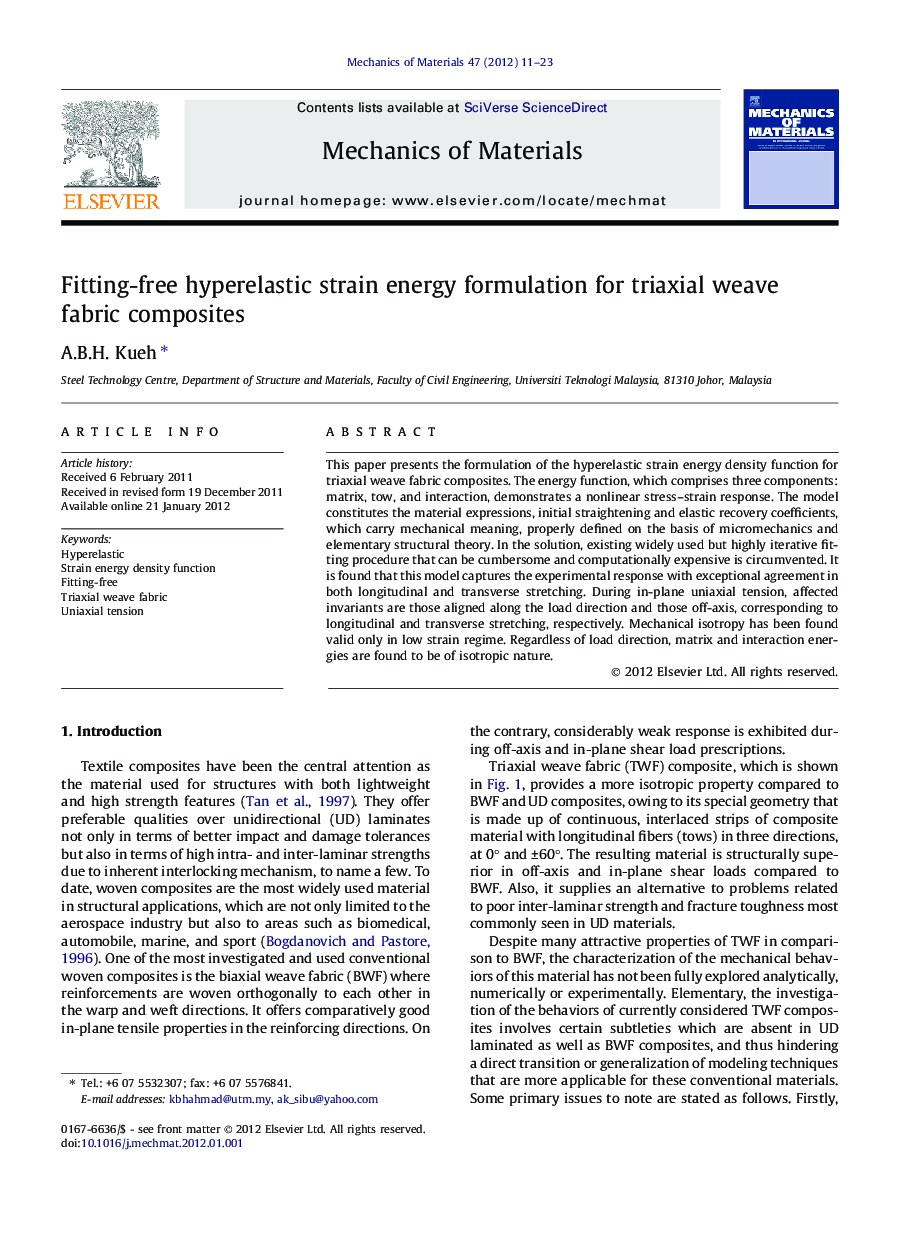| Article ID | Journal | Published Year | Pages | File Type |
|---|---|---|---|---|
| 802904 | Mechanics of Materials | 2012 | 13 Pages |
This paper presents the formulation of the hyperelastic strain energy density function for triaxial weave fabric composites. The energy function, which comprises three components: matrix, tow, and interaction, demonstrates a nonlinear stress–strain response. The model constitutes the material expressions, initial straightening and elastic recovery coefficients, which carry mechanical meaning, properly defined on the basis of micromechanics and elementary structural theory. In the solution, existing widely used but highly iterative fitting procedure that can be cumbersome and computationally expensive is circumvented. It is found that this model captures the experimental response with exceptional agreement in both longitudinal and transverse stretching. During in-plane uniaxial tension, affected invariants are those aligned along the load direction and those off-axis, corresponding to longitudinal and transverse stretching, respectively. Mechanical isotropy has been found valid only in low strain regime. Regardless of load direction, matrix and interaction energies are found to be of isotropic nature.
► Hyperelastic energy function for triaxial weave composites is formulated. ► Nonlinear constitutive relation is computed free of iteration and fitting. ► Model captures experimental longitudinal and transverse responses. ► Longitudinal and transverse loads affect 0° and ±60° tows, respectively. ► Matrix and interaction energy functions are isotropic but that of tow is not.
